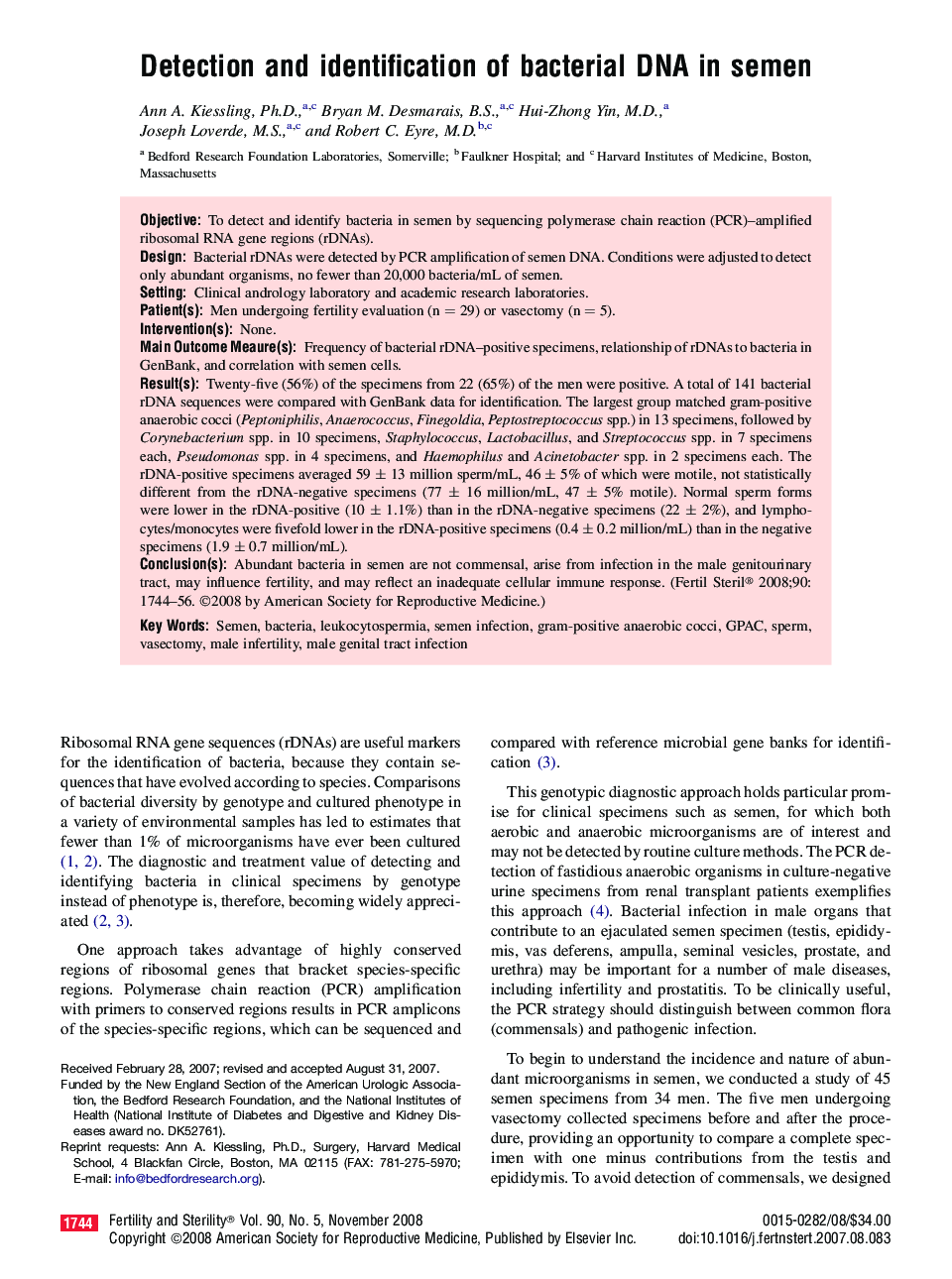| Article ID | Journal | Published Year | Pages | File Type |
|---|---|---|---|---|
| 3941616 | Fertility and Sterility | 2008 | 13 Pages |
ObjectiveTo detect and identify bacteria in semen by sequencing polymerase chain reaction (PCR)–amplified ribosomal RNA gene regions (rDNAs).DesignBacterial rDNAs were detected by PCR amplification of semen DNA. Conditions were adjusted to detect only abundant organisms, no fewer than 20,000 bacteria/mL of semen.SettingClinical andrology laboratory and academic research laboratories.Patient(s)Men undergoing fertility evaluation (n = 29) or vasectomy (n = 5).Intervention(s)None.Main Outcome Meaure(s)Frequency of bacterial rDNA–positive specimens, relationship of rDNAs to bacteria in GenBank, and correlation with semen cells.Result(s)Twenty-five (56%) of the specimens from 22 (65%) of the men were positive. A total of 141 bacterial rDNA sequences were compared with GenBank data for identification. The largest group matched gram-positive anaerobic cocci (Peptoniphilis, Anaerococcus, Finegoldia, Peptostreptococcus spp.) in 13 specimens, followed by Corynebacterium spp. in 10 specimens, Staphylococcus, Lactobacillus, and Streptococcus spp. in 7 specimens each, Pseudomonas spp. in 4 specimens, and Haemophilus and Acinetobacter spp. in 2 specimens each. The rDNA-positive specimens averaged 59 ± 13 million sperm/mL, 46 ± 5% of which were motile, not statistically different from the rDNA-negative specimens (77 ± 16 million/mL, 47 ± 5% motile). Normal sperm forms were lower in the rDNA-positive (10 ± 1.1%) than in the rDNA-negative specimens (22 ± 2%), and lymphocytes/monocytes were fivefold lower in the rDNA-positive specimens (0.4 ± 0.2 million/mL) than in the negative specimens (1.9 ± 0.7 million/mL).Conclusion(s)Abundant bacteria in semen are not commensal, arise from infection in the male genitourinary tract, may influence fertility, and may reflect an inadequate cellular immune response.
